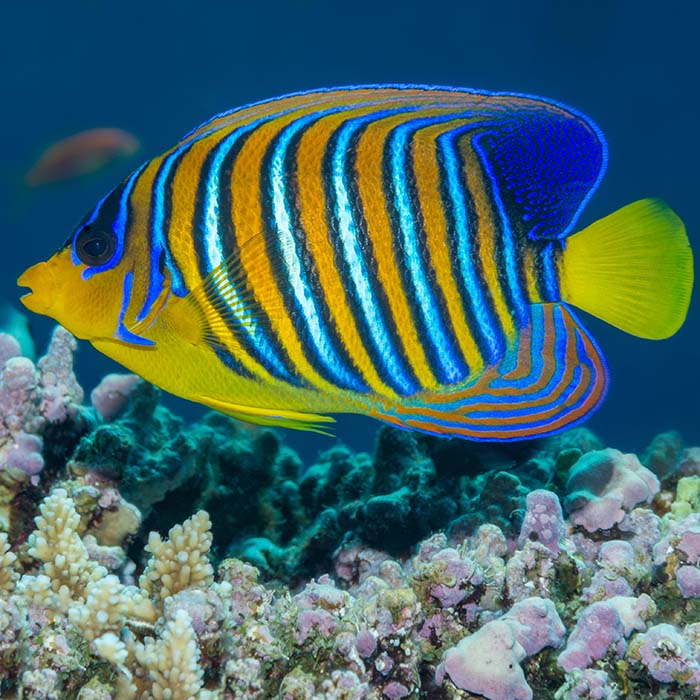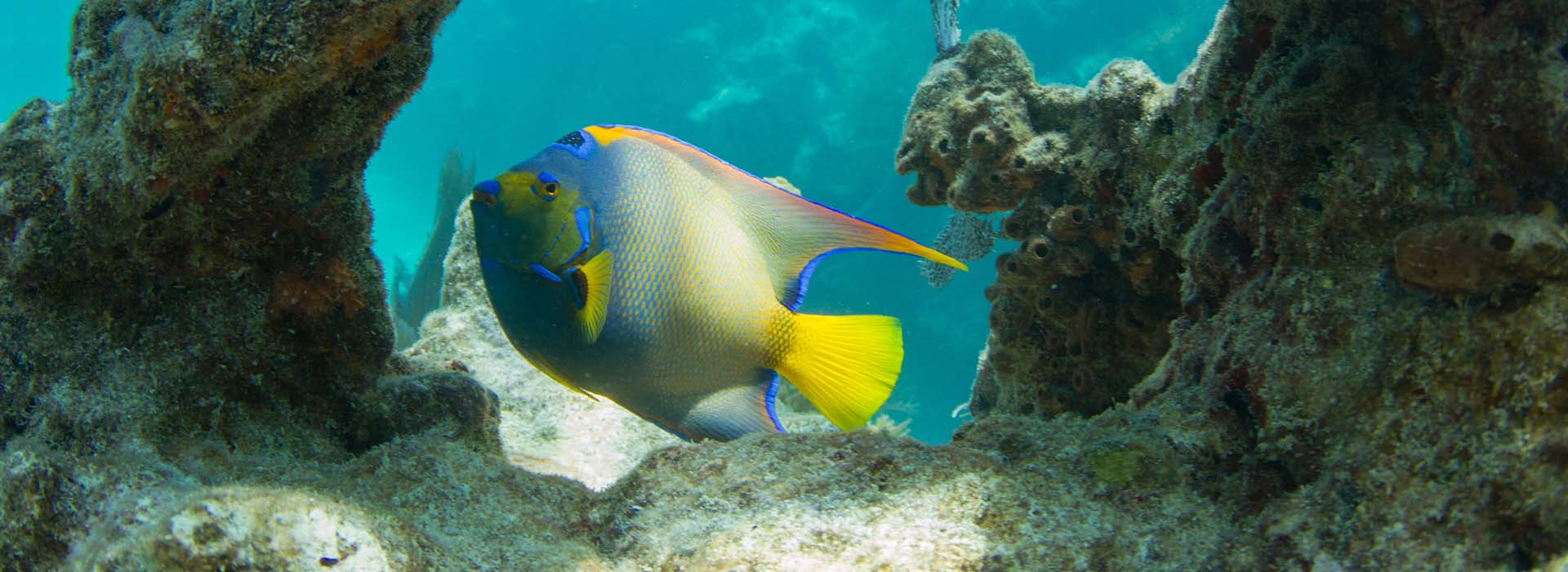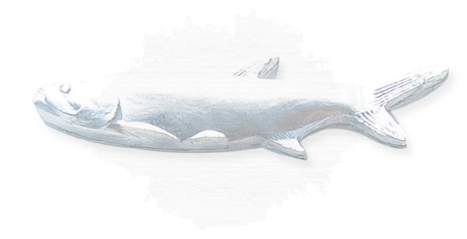Marine angelfish live in the tropical Atlantic, Indian and mostly western Pacific Oceans on shallow reefs. The family contains approximately 86 species, and they should not be confused with freshwater angelfish or the tropical cichlids of the Amazon River. With their vibrant colors, marine angelfish are some of the more conspicuous residents of the reef and closely resemble their relative, the butterfly fish. Preopercle spines (part of the gill covers) distinguish them from the butterfly fish. Pomacanthidae, their scientific name, is from the Greek poma, meaning “cover,” and akantha, meaning “thorn.” The larger species are also quite bold and known to approach divers. Most angelfish restrict themselves to the reef’s shallows, seldom venturing deeper than 50 meters. They hide among the nooks and crevices of the reef by night. Some species are solitary and form mated pairs, while others form harems with a single dominant male in charge of several females.
Angelfish Characteristics and Behavior
Butterfly fish, while similar in looks to the angelfish, tend to be much smaller and range from 12 to 22 cm long. Their bodies have striking black, white, blue, red, orange and yellow patterns. Similar to a butterfly’s wings, many angelfish have eyespots on their flanks and dark bands across their eyes. Generally diurnal, butterfly fish inhabit less than 18 meters of water and often stick to particular home ranges. The corallivores are incredibly territorial, forming mated pairs and staking a claim to a specific head of coral.
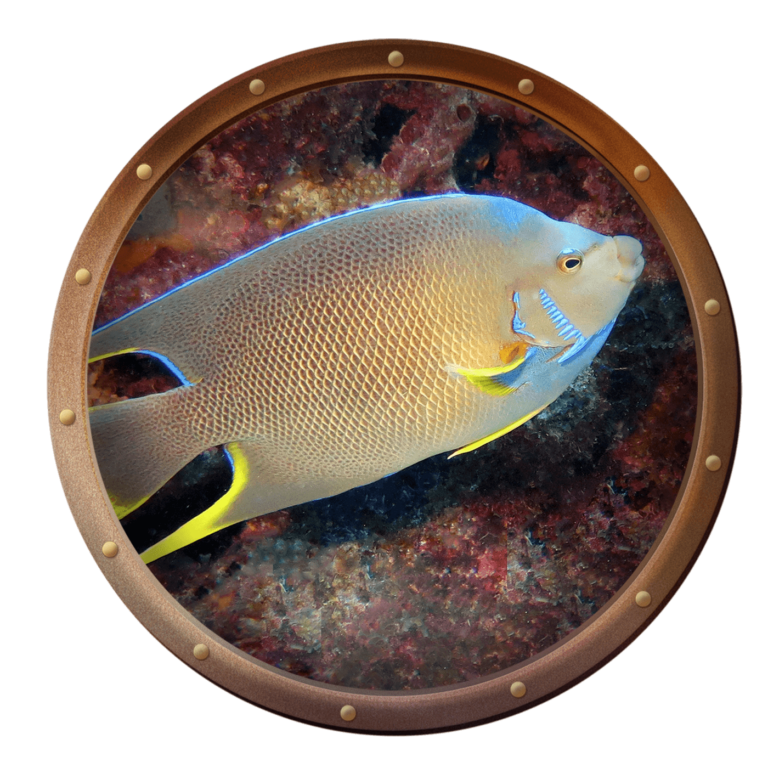
Queen Angelfish: Royalty of the Reefs
First identified and named in 1758, approximately 86 species of marine angelfish live in shallow reefs worldwide.
Queen angelfish have distinct electric-blue bodies with yellow fins and tails. The fish may even have orange or purple highlights. Queen angelfish acquired their names from their “crowns” — a round black/blue spot on their heads. They can grow up to 18 inches long and 3.5 pounds. Juvenile queen angelfish have identifiable features, such as their yellow color, which turns blue as they age.
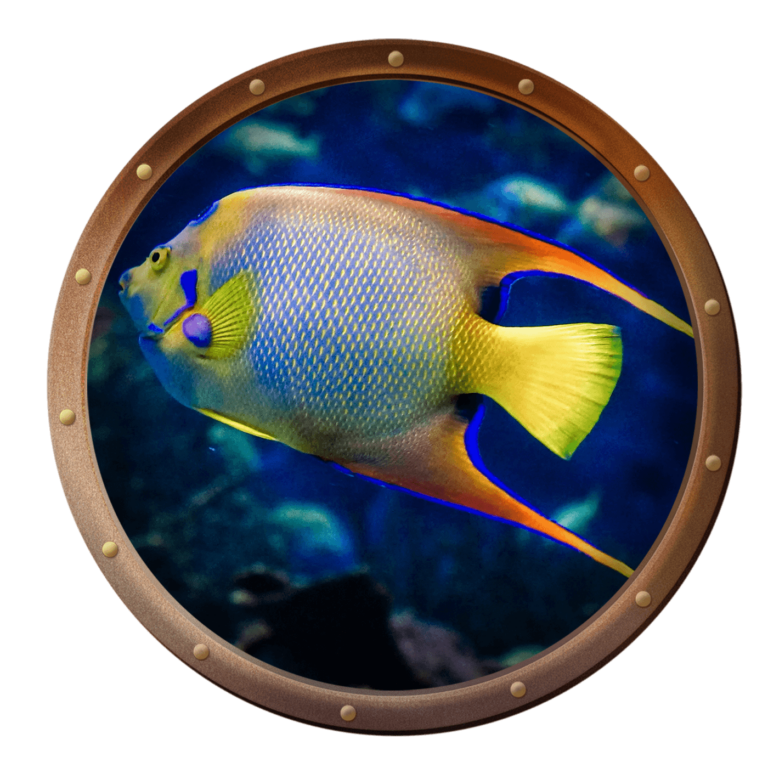
Queen Angelfish Characteristics and Behavior
Queen angelfish are omnivores, eating primarily sponges and algae. They can be opportunistic and eat sea fans, soft corals and even jellyfish. Juveniles serve as cleaners for larger fish species by picking parasites off the skin of larger fish to eat. This relationship gives the juvenile queen angelfish an easy food source and can benefit the health of the larger fish.
Marine queen angelfish either live alone or in pairs. Because many fish live in pairs, it’s theorized that they are monogamous and form long-term bonds with their partner. During reproduction, the pairs will touch their bellies and release clouds of sperm and eggs. A female can release 10 million eggs in each spawning cycle. Fertilized eggs will float in the water for 15 to 20 days; then, they hatch into larvae with attached yolk sacs for nutrition. Once they use up the yolk sacs, the juveniles feed on plankton. Another 30 days later, the juvenile fish find homes on the bottom of the reef and feed on parasites.
